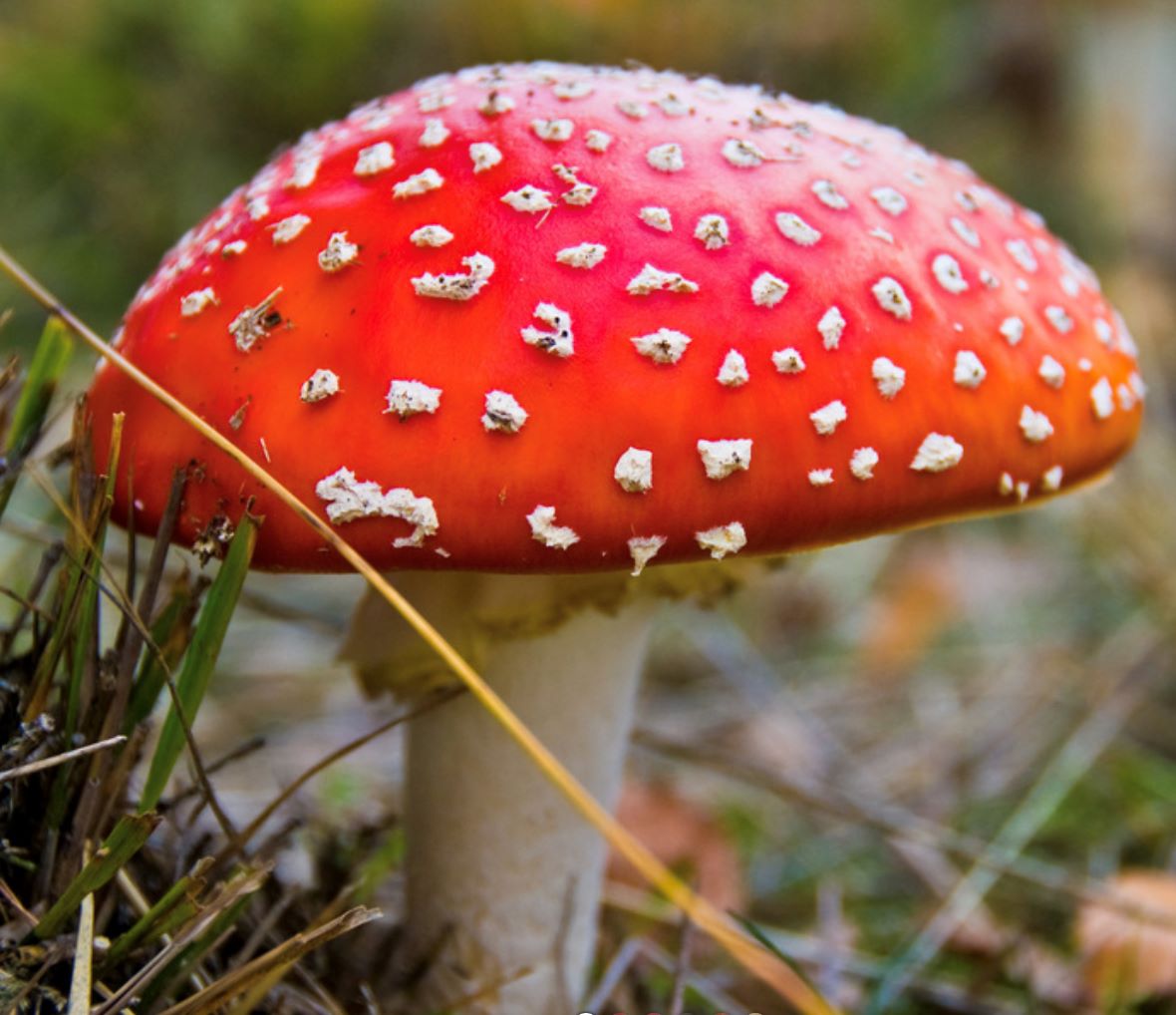Out in the Woods
- October 11th 2024
- Out in the Woods

Fly amanita mushroom, which has been documented along the Vigue Trail, is poisonous and psychoactive.
Photo: iNaturalist
Fall rains bring mushrooms
By Kevin McKeon, Maine Master Naturalist
There are an estimated 27,000 species of mushrooms worldwide. The Maine Mycological Association has identified about 2,500 of those in Maine. There are at least 15 mushroom farms in the state, growing popular Maine varieties such as porcini, oyster, chanterelle, black trumpet, hen, and chicken of the wood for local and regional markets. Some mushrooms are treated with UV (ultraviolet) light which enhances vitamin D content and may be labeled as such or “rich in vitamin D”.
Where do mushrooms come from? Think of them as apples, with the “tree” part underground. Mushrooms are neither plant nor animal, but the fruit of fungi. Some are called mycorrhizal fungi and form a symbiotic relationship with the roots of an estimated 90 percent of Earth’s plants, providing them needed soil nutrients and enhancing water absorption in exchange for the plants’ sugars made from photosynthesis.
Often, when adding plants to our gardens, we’ll notice those very fine, white, thread-like fibers in the soil: That’s the mycelium that makes up the underground mycorrhizal network — the “tree” part of the mushrooms. Mushrooms are the “apples” part of this fungal network — the fruiting bodies that erupt from the mycelium and release reproductive spores at maturity. The late summer/early fall rains seem to excite the fungi to form the fruit, so that’s a good time for a mushroom walk around Deering Pond’s bog habitat. But beware: Danger lurks in some of those enticing beauties.
According to Greg Marley, whose expertise has been relied upon by various New England poison control centers, about half of all mushrooms express some level of toxicity, from mild discomfort to potential death. During mushroom season, Marley is contacted two or three times a week about potential mushroom poisonings. But on average, there are only three deaths a year in the United States from toxic mushrooms. The most common mistake mushroom foragers make is confusing toxic jack-o’-lantern mushrooms (which are orange) for delicious golden chanterelles (which are yellow). Poisonous mushrooms primarily damage liver cells. In 2008, two Portland chefs mistook poisonous lilac-brown boletes for porcini mushrooms and spent some time in the hospital as a result.
Amanita phalloides, commonly known as the death cap mushroom, is generally considered the most poisonous and deadliest mushroom in the world. Eating only about ½ of this mushroom’s cap can cause death, and its appearance resembles many other edible mushrooms. It’s responsible for 90% of mushroom-related fatalities every year, causing more deaths worldwide than any other mushroom, according to British Columbia Medical Journal. It is one of many in the genus Amanita, introduced to us from Europe, probably with non-native chestnut, oak, and pine trees, around the early 1900’s, and evolved to form symbiotic relationships with various broadleaved trees.
The deadliest distinction arises from the fact that this mushroom presents itself with variable colorations, resembling many other tasty edible species under the Amanita genus. All this is to say: If you don’t know what you’re foraging in the wild, take great care. The Northern New England Poison Center at Maine Medical Center (800-222-1222) in Portland, where about 50 or so exposures are reported yearly, asks us to remember: “There are old mushroom hunters, and bold mushroom hunters, but there are no old, bold hunters.”
So, my advice is to get your tasty and healthful mushrooms from our very own Mousam Valley Mushrooms or Sanford Farmers’ Market.






